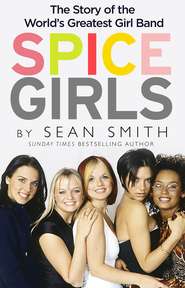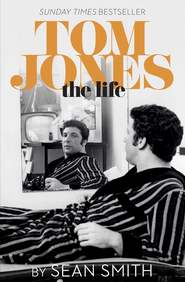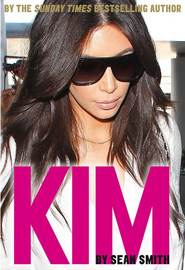По всем вопросам обращайтесь на: info@litportal.ru
(©) 2003-2024.
✖
Ed Sheeran
Настройки чтения
Размер шрифта
Высота строк
Поля
Keith and his wife, Sally Voakes, a jazz singer, had started to play gigs in the area and were building a following themselves. Sometimes it would just be the two of them, the Sally Voakes Duo or, for other nights, they might be joined by three or four local musicians.
One evening they were booked as a duo to play the Crown Hotel, which occupied a central position in Market Square. Imogen and John decided to go.
They were impressed, not just with Keith’s playing but also by his calm demeanour. They approached him and asked if he might consider teaching Ed. He agreed to give him a weekly lesson, charging £20 for an hour. The lessons, usually in Ed’s untidy teenage bedroom, continued for the next five years and complemented his development as a guitarist and, just as importantly, as a songwriter.
Ed already had a few guitars hanging on the bedroom wall. His rock guitar had pride of place over the bed. He preferred to decorate the orange walls of his room with his favourite instruments rather than posters of footballers or pop stars. When he grew tired of one or no longer played it, the guitar would be banished under the bed.
One of the first things Keith noticed in the room was an Epiphone Les Paul Sunburst guitar. He offered Ed a Bigsby tremolo unit that he wasn’t using at the time, and popped it round to the house. By the time of the next lesson, Ed had put it on and was practising using it. Ed and his mum were hugely appreciative of the gesture, which helped teacher and pupil form a bond of mutual respect and the Krykants and Sheerans to forge a lasting friendship.
Keith quickly realised that Ed’s playing was ‘pretty advanced’ for his age and that he also had a great deal of confidence in his own ability. Laughing, he recalls, ‘He’d got a little bit of an inflated ego. He once said that I was the only guitarist he’d seen that was better than him. He was only thirteen!’
Musically, Ed was at a crossroads. Like many teenage boys, his initial ambition was to be a rock god. He had his electric guitar, admired Eric Clapton and others, and had formed his own group with two friends from school, Fred and Rowley Clifford. They called themselves Rusty and played heavy-metal covers, mainly Guns N’ Roses. Their showstopper when they appeared at the old Drill Hall in Framlingham was the American band’s most famous hit ‘Sweet Child of Mine’. Ed liked that song but wasn’t wild about the rest of the material.
While Fred did his best impersonation of charismatic singer Axl Rose, Ed took on the Slash role of lead guitarist. He relished the solo, meticulously learning every note in his bedroom after school. He didn’t sing because he wasn’t any good at it. ‘I couldn’t really hold a tune until I was sixteen,’ he admitted.
Eric Clapton’s most famous band, Cream, had been a trio, as was the Jimi Hendrix Experience and Rory Gallagher’s Taste. It seemed the perfect number to draw attention to the guitarist. ‘They took it very seriously,’ observes Georgie Ross. As well as various assemblies and low-key school events, they played at the annual charity concert at Thomas Mills, one of the big occasions of the year.
Ed was already getting bored with the band. Keith Krykant observes, ‘He was playing this rock but I think was beginning to realise there was other stuff out there. He’d done that. He exhausted it. He was just imitating others.’
Everything changed when Ed discovered the second of the three great musical influences in his life. He was staying up late one night, watching videos on the music channels, when he saw ‘Cannonball’ by a then little-known artist called Damien Rice. It was very quirky, a series of apparently random images sprinkled with shots of Damien’s face as he sang. The almost surreal experience was linked together with a hypnotic acoustic riff.
Ed was immediately hooked. He went out and bought Damien’s debut album O the very next day, which was later his choice in Q magazine’s fascinating ‘The Album that Changed my Life’. He admired its honesty and rawness: ‘It was like he’d reached down his throat, grabbed his heart, ripped it out, stuck it on a plate and served it up to the world.’ Ed couldn’t wait to share his discovery with his friends. Unfortunately the Clifford brothers thought it was ‘shit’ so Rusty was hastily disbanded due to artistic differences. The falling-out was an early indication to Ed that he was better off doing it all himself.
Damien was born in Dublin and brought up in the thriving town of Celbridge, about fourteen miles from the city. He was already in his late twenties when he released the album that made his name internationally. He had spent his first years in music as part of a rock group called Juniper, which he had formed with friends from secondary school. Eventually, he became disenchanted with the musical compromises he felt he was making to please their record company. He became his own man and travelled around Europe busking, eventually settling in Tuscany where he wrote many of the songs for O.
His first solo composition to be released as a single was the agonisingly beautiful ‘The Blower’s Daughter’, which highlighted his ability to share his emotions with the listener. Ed was entranced by Damien’s ability to sing with such passion and share his private and innermost feelings with the world. Some of the songs were inspired by his relationship with the singer Lisa Hannigan, who provided fragile, haunting vocals alongside Damien on many of the tracks. She was his muse, they worked well together and he loved her taste.
Commercially, Damien has yet to top O. The Irish Independent described the album as ‘one of the great Irish cultural success stories of the decade’. Sadly, Damien and Lisa would later split acrimoniously. The notoriously private singer heartbreakingly told the Irish music site Hot Press, ‘I would give away all the music success, all the songs and the whole experience to still have Lisa in my life.’
Ed had soon learned to play all these poignant songs but he had to wait to see Damien in concert for the first time. That changed in 2004, during the late summer holidays in Ireland. Ed’s cousin Laura told him that Damien was playing a low-key gig for under-eighteens at Whelan’s in Dublin where she lived. The pub in Wexford Street was widely recognised as the original music venue in the city and was internationally famous for the quality of the acts that had performed there and as a popular location for television and films.
Laura and Ed were able to get tickets that stipulated, ‘All adults must be accompanied by an under-18’. The adult, as ever, was John Sheeran. The gig would prove to be highly significant for Ed, one of the most important evenings of his life so far. For the first time he saw a solitary singer captivate an audience by performing his own songs: ‘He holds them in the palm of his hands with just songs he has written on his own with a guitar.’ Ed stood at the front, unbothered at being surrounded mainly by winsome teenage girls.
Afterwards, John took his two charges into the front bar area where Ed, who barely looked his then age of thirteen, had his first experience of a meet-and-greet where an artist takes the trouble to chat, sign autographs and pose for pictures with members of the audience. This interaction was an essential part of the whole experience of small gigs in pubs and a lead that Ed would follow diligently in the future.
He was lucky in that he was standing next to Damien’s cellist, Vyvienne Long, who asked him, ‘Can you watch my cello for a bit?’ He dutifully guarded the instrument for twenty minutes until she reappeared, this time with Damien and the rest of the band. Ed told Lisa Hannigan he hoped to make a recording soon and she sweetly gave him an address so that he could send her a CD when it was finished. Ed, in a bright yellow T-shirt, had his picture taken with Damien, who was wearing a red hoodie, the same item of clothing that would be associated with Ed when he first started gigging. While not exactly scruffy, Damien was clearly an artist unbothered by image and the need to look like a star every minute of the day.
When he met Damien, Ed thought he was very cool: ‘If he had been a dick, I’d probably be working in a supermarket.’ He would later admit that it was life-changing – at that moment, he decided that he, too, was going to write songs like Damien. He was not a teenager who dreamed of doing something: he would go and do it. He would be a singer–songwriter, and one day he would appear at Whelan’s with just a guitar. Like Damien, he was destined to write many songs that would never see the light of day. Both were constantly creative.
Fortunately, his cousin Laura shared his enthusiasm. Whenever they got together, Ed would say, ‘I’ll be Damien, you be Lisa,’ and they would record all the songs on O, which Ed knew backwards and forwards, in the garden shed at her family’s house in Tuam, County Galway. Ed was lucky to have two older cousins, Jethro and Laura, who were inspired by the music he loved.
Back in Framlingham for his next lesson with Keith, he couldn’t wait to tell his guitar mentor that he had seen Damien Rice and he, too, was going to be a singer–songwriter. First, though, he needed to find an old guitar. Damien played one from the Lowden guitar factory in Ireland, which looked the worse for wear but had a beautiful sound that filled the room. Keith recalls, ‘I turned up one day as usual and he said to me straight away, “Have you got an old acoustic guitar? I don’t want a new one. I want an old, battered, characterful acoustic guitar.” So I told him I did have one actually, a Dallas model I’d bought for my wife Sally twenty-five years or so before. We didn’t use it much anymore so I sold it to him. He wanted to play “Cannonball”. And he started generally to get more into acoustic music.’ Ed was thrilled to have the instrument as it meant he could practise playing Damien’s music and make it sound more authentic. He probably knew the songs better than anyone other than the artist himself. That was part of his extraordinary gift. He was a sponge who could soak up a piece of music, then improvise and experiment to turn it into something entirely new and unique to him.
An additional attraction of O was that each song seemed to build slowly from an initial guitar riff and blossom into an emotional climax – something Ed aspired to achieve with his songs from the beginning.
For Christmas 2004, Ed’s main present was a Boss Digital Recording Studio, a home studio for his bedroom. He immediately threw himself into recording his first album. He was determined to finish it in the holidays so it would be ready in time for the next term at Thomas Mills. He started work on Boxing Day 2004, and had completed fourteen songs twenty-four days later on 19 January 2005. Although he was proud and excited at the time, he now keeps Spinning Man away from the public. It is an amazing achievement for a thirteen-year-old, but it sounds nothing like the Ed Sheeran songs we know today.
For starters it’s a rock album, bearing far more of the influence of Green Day, Guns N’ Roses and Oasis than the acoustic lyricism of Damien Rice. He seems to have taken the power punk of Green Day’s ‘American Idiot’, combined it with the more traditional rock of ‘Sweet Child of Mine’, and thrown in a dash of ‘Don’t Look Back in Anger’.
He had been building up his collection of guitars and wanted to play his best one on the album. He had acquired a striking B. C. Rich rock guitar during his Rusty days. Slash and Axl Rose played B. C. Rich models onstage. You couldn’t miss Ed’s, which was purple with gold hardware. Keith was impressed: ‘It was a really serious guitar with a beautiful bird’s-eye maple neck.’
Spinning Man featured fourteen tracks and fifty minutes of music. The album starts with a drum intro and a dirty guitar riff. This is ‘Typical Average’, one of the first songs Ed wrote. Lyrically, it’s not a high point, repeating, ‘I’m a typically average teen, if you know what I mean’, but it does possess a strangely catchy quality, even if the vocal is distinctly shaky.
The second track, ‘Misery’, contains another powerful rock solo, setting the tone for the guitar work on the complete album. His first rap is ‘On My Mind’, which seems to be directed at an unnamed girlfriend and, while it lacks the power of his later, more sophisticated work, it sounds more like Ed than his Green Day numbers. And it was the first Ed Sheeran composition to contain the phrase ‘fuck off’.
Even more interesting is ‘No More War’, which is a protest song about the futility of war. The older Ed would deliberately avoid writing strong political statements so this is a rare song that proclaims, ‘Put down your guns because it’s not for fun’. ‘Moody Ballad of Ed’ is back in ‘Typical Average’ territory and is probably even shakier vocally as he drifts in and out of tune. He sounds a little better on a slower number, ‘Addicted’, but ‘Butterfly’ and ‘Concord’ are more representative of what is basically a rock album. The last consists of crashing chords and a power solo that would have done Deep Purple or Jeff Beck proud circa 1970. There’s more of that on ‘Crazy’, which has an even longer head-banging guitar solo, and ‘Broken’, which seems to reference ‘Sunshine of Your Love’, a classic Cream track that featured Eric Clapton.
That rock sound continued on ‘Celebrity’ and ‘Sleep’, which must have been a precious commodity in the Sheeran household, with Ed on electric guitar in one room and Matthew on violin in another. ‘Mindless’ was a post-punk homage to Kentucky Fried Chicken before the album ended on a high note with ‘I Love You’, which was probably the closest track to future Ed Sheeran. The problem with his slower songs was that they exposed more obviously his vocal limitations at the time. As every musician knows, recording the album is only the start of the process. He needed a title and decided to call it Spinning Man after a late work by the great surrealist Salvador Dalí. John Sheeran had hung a print on a wall at the house so Ed was very familiar with it and the title seemed perfect for a spinning CD.
To add to the professional feel of the project, Ed enlisted his parents to help produce a proper CD, complete with case and sleeve notes, which proudly declared that all the material was copyright Ed Sheeran and Sheeran Lock Ltd. He asked Alison Newell, a local artist and family friend, to design the cover. She featured his Faith guitar to one side of a black background. Some delicate white spirals, shaped like a prawn, make simple embroidery. The back featured a photograph taken by his father of Ed playing the same guitar on the streets of Galway the previous summer, his first venture into busking. In his thanks, Ed included ‘all those who put money into my guitar case’.
He also thanked his cousins Laura and Jethro, his brother Matthew and all Sheerans and all Locks. There are thanks, too, for Mums and Dabs, his pet names for his mother and father since he was a toddler. Among the friends he acknowledges, he mentions Claire – the inspiration for some of the songs, including ‘I Love You’. According to Ed, they had a very innocent hand-holding friendship that was over by the time he recorded the album, although he was upset when they broke up.
For his musical inspiration, Ed cites Damien Rice, Eric Clapton and ‘Jimmy H’ (presumably Jimi Hendrix) but there is sketchy evidence of their influence on the album. There’s something of Hendrix and Clapton but Spinning Man bears no resemblance to Damien Rice, who really doesn’t do solos, big riffs or long instrumentals on an electric guitar. At thirteen, Ed was still searching for his own sound and his first album was really a hangover from his schoolboy band Rusty. He is, though, too modest about the achievement.
Perhaps the most interesting aspect of Spinning Man is its maturity, best exemplified by his personal message on the sleeve notes: ‘Songwriting and playing the guitar are like having a direct line to my thoughts and feelings. Everyone has strong feelings whatever their age. We can all feel love, joy, longing, pain and hate.’ His mother may have used her editing skills to help but it clearly reveals Ed’s early self-awareness.
He sent the CD to Lisa Hannigan but wished he had waited when he didn’t get a response. The reaction from those he played it to in Framlingham was very encouraging. Nobody wanted him to lose heart by being over-critical of his first recordings, particularly his mother and father. They agreed that if he wanted to make money out of his music, it had to be recorded to a higher standard than he could achieve in his bedroom. He also needed to work on his singing.
When his mum and dad realised how seriously Ed was taking his music, they asked Keith, who had been a television and radio producer, if he could find a local studio to record some of the songs to a more professional standard: ‘John said to me, “Give him some experience in a studio.”’ John was more interested in Ed spending time in a proper studio than in the finished product.
They found the ideal location just a few miles away in the town of Leiston at the renowned Summerhill School, the progressive educational facility founded by A. S. Neill. His grandson Henry Readhead ran the studio there mainly for the school but said that Ed could come with Keith for a session in March 2005.
Keith agreed to waive his fee as producer for the day in return for an hour or two in which John would show him how to improve his business online and make better connections for his own music and performance. John taught him how to build a network of links so that one gig would lead to another. Imogen told him, ‘It’s the currency of the day.’ That system of barter had served Sheeran Lock well and would continue to be useful to Ed as he sought to promote his work.
For The Orange Room, named in honour of his bedroom, they chose Ed’s five favourite tracks from Spinning Room and put them in a different order: ‘Moody Ballad of Ed’ followed by ‘Misery’, ‘Typical Average’, ‘Addicted’, finishing again with ‘I Love You’.
The most striking improvement from Spinning Man was the use of acoustic guitar and, generally, a better vocal, but his attempt at falsetto on ‘Addicted’ needed plenty of work. Occasionally, there are hints of the later Ed Sheeran. Keith remembers doing his best to convince Ed that he needed to tune his guitar all the time because it would show up on an edit even if it was just slightly out of tune: ‘He was a little bit lazy about it.’
Ed had turned fourteen and was beginning to stick up for himself musically. When Keith hinted that a vocal was just a little bit out of tune and they should go back and do it again, Ed was quite clear: ‘I like that. I want to keep that as it is.’ Henry acted as sound engineer and one of his protégées, Megumi Miyoshi, who was sixteen and a promising singer, helped with mixing and some backing vocals.
The Orange Room clearly illustrates the growing influence of Damien Rice, although ‘Typical Average’ still sounds like Green Day jamming after a heavy night out and is not remotely related to anything from O.
Ed saved up and pooled all his resources to have a thousand CDs produced, which was quite optimistic. He proudly took them to school and offered them round for a fiver. Most of them sat around in boxes at home, where they remained until he became famous. Then he had to ban his mum from selling either The Orange Room or Spinning Man.
In an interview on The Jonathan Ross Show in December 2014, Ed played a short segment of a song from his phone. It was ‘Addicted’ and sounded very average. His guitar work was good but not the vocal, which had cats running for cover. In Ed’s defence, his vocal problems were mainly because his voice had yet to break so he struggled with intonation. But as Ed accurately commented, ‘You have to learn and really practise.’
5
The Loopmeister (#ulink_0786f528-3601-5ab5-b0b5-4be328f15c31)
One evening Keith and Sally Krykant were among a group of friends invited round to John and Imogen’s house for dinner. When they arrived, Preston Reed was already sitting at the dining table. Anyone taking an interest in guitar would have known about him, a striking figure who featured often in the serious music press talking about his unique playing style.
Ed had noticed in a guitar magazine that the virtuoso player was offering places on a summer-school venture at his home in Scotland. He would be teaching his percussive method, known in the business as ‘tapping’, to a few chosen students during the summer holidays. Ed set about convincing his parents that the workshop was vital to his development as a musician.
Preston, it transpired, was playing a gig locally and the Sheerans went along. Instead of grabbing a quick autograph, they invited him to stay at the house; he accepted. Keith was particularly impressed: ‘This guy is a world-class international player, who had developed his own style of playing. It was completely different to just changing the tuning.’
Presumably John and Imogen made a deal involving the ‘currency of the day’ because, during the next summer holidays, Ed set off with his father on a train to Girvan on the Ayrshire coast for a five-day summer workshop. Preston had moved to this beautiful part of Scotland, fifty miles south of Glasgow, from his home in Minneapolis in 2001.










